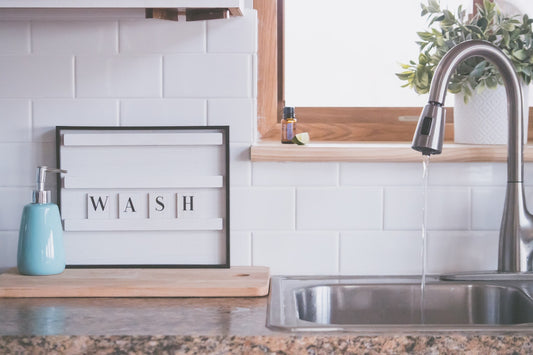Water is essential for our survival, be it for drinking, washing, bathing, or anything else. However, having access to water is not all. The water that you are using has to be clean and pure from any containment as well.
Around 20 million Americans have unhealthy drinking water. As a result, they are more vulnerable to diseases relating to water. So, how do you deal with this issue? Well, the answer is a simple one.
Installing a whole house water filter can help you make your drinking water suitable for use. In this article, we will cover basic things that can help you get a better idea so you can buy the right chloramine filtration for your house. So, without further ado, let's begin.
Why Does Your House Need a Whole House Water Filter?
Water pollutants are present in your tap water as well. Although they don't have any significant negative effects, they are something that you need to worry about when their levels are quite high. And that is when you need to take action as these elements can have adverse health effects.
Considering this above point, many Americans switch from using municipal water to Chloramine water. They think that it is safer to consume than the regular water from the municipal supply system. But is it? Let's find out more about it.
Chloramine Water in American Households
Chloramine became a part of water treatment in the 1930s. After the introduction of EPA's Stage 1 and Stage 2 Disinfectants and Disinfection Byproducts Rules, it saw a boom in its usage. And with that, it became the second most common disinfectant.
However, this does not ensure that it is completely safe for drinking. Since most Americans are consuming it daily, it is vital to understand all about chloramine water before you and your family use it.
Is chloramine-treated water safer?
Many people switch to Chloramine water instead of regular tap water. Although it can eliminate bacteria, there is a much greater risk of consuming this type of water.
There are a few types of chloramine that have a much higher level of toxicity than others. Also, it is less effective as a disinfectant in comparison with chlorine. As per a study by World Health Organization, for the eradication of rotaviruses and E. coli, chloramine is 2,000 times less efficient than chlorine.
Furthermore, they also stress the importance that disinfection has in providing safe water. And numerous groups complain about their growing concerns about the usage of chloramine in drinking water. They complain about the adverse side effects and health issues that many of us are not aware of.
Adverse health effects of Chloramine-treated Water
Different types of chloramine can lead to certain health issues. For example, dichloramine and trichloramine are common factors that can lead to issues with your respiratory systems, skin, and eyes.
Here are some of the most common problems that you can encounter because of chloramine:
- Damage to the mucus membranes of the nasopharynx
- Eye irritation and damage to the nose and throat if there is a high-level Chloramine usage
- Can become the reason for asthma attack
- Respiratory issues are common such as breathing problems
- Can lead to burning of eyes, sore throat, coughing, nausea, and vomiting if there is the inhalation of Chloramine fumes
These are just some of the common problems associated with the usage of Chloramine water. Since there are different types of chloramine, it can lead to more serious effects on your body.
How Can You Remove Chloramine from Drinking Water?
While there is a debate that as a secondary disinfectant, chloramine is effective in purifying water, we also need to look at the adverse health effects that it can cause.
So, considering the above effects, you should remove chloramine from your water. So, how can you do that? Here are a couple of ways that can help you out with it:
Boiling Water
A common way of removing harmful elements from the water is through boiling it. By boiling the water for approximately 20 minutes, you can reduce the chloramine and ammonia to a safer level.
However, there are still debates regarding this method as chloramine is a complex element, unlike chlorine. That is why removing it through boiling water might not be useful.
Activated Carbon Filters
A great way to remove chloramine and other harmful elements from your water supply is by using carbon filters. It is the best option when it comes to water purification and can help reduce containments from the water.
Not only that, but it can also improve the odor and the taste of drinking water. With the help of advanced water filtration, you can easily filter out the containments and harmful components in the water.
And if you want, you go for a much more advanced carbon filtration known as catalytically activated carbon filtration. It uses the maximum carbon filtration capabilities, so you can get the safest and clean water.
In comparison with boiling, installing water filtration for your whole house would be much viable option. Therefore, it is a much better option to go for Chloramine water filtration that can help you prevent any adverse health effects.
Conclusion: Use the Best Chloramine Filtration for Your House
Chloramine is a common disinfectant that can help in making your water safe for you. However, its usage is more of a debate for many groups. From citizens to many environmental advocacy groups, many have concerns and are raising voices against it.
All of this indicates that you need to find the right filtration system for your home. It is the best way to ensure that you and your family can get the water free of any Chloramine. So, choosing a catalytic or advanced carbon filter would be the ideal option for your house.
By purchasing a standard activated carbon filter or a catalytic carbon filter, you can help eliminate harmful chloramine levels from the water. And with just a little effort, you can save yourself and your family from the harmful effects of chloramine, providing them safe and pure water.





